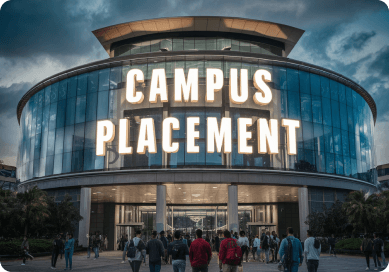Enter OTP



Lyon, France

Lyon, France

Cost Of Living

Undergraduate Fees International Students

Post Graduate Fees International Students

INSA Lyon stands out for its strong government backing, receiving the highest public funding among all French Grandes Écoles. It’s widely respected for producing high-quality engineers and offers a low acceptance rate paired with affordable tuition, making it both competitive and accessible. The institute is home to 23 cutting-edge research labs, reinforcing its focus on innovation and academic rigor. One of its key highlights is the FEE Lyon-TECH program, which supports students in developing entrepreneurial skills and launching startups. INSA’s reputation also makes it one of the most preferred engineering schools among recruiters in France. Its balance of academic depth, research, and real-world readiness defines its unique position in technical education.
François Gabart, born in 1983, is a world‑class French offshore sailor and Vendée Globe winner. An INSA Lyon graduat... View More
François Gabart, born in 1983, is a world‑class French offshore sailor and Vendée Globe winner. An INSA Lyon graduate, his engineering mindset shaped his dedication to precision, optimization, and environmental stewardship in solo ocean racing. In the 2012– 13 Vendée Globe he set a new record by completing the solo circumnavigation in just 78 days, 2 hours, and 16 minutes. Later in 2017, he broke the speed record for solo global circumnavigation, finishing in 42 days, 16 hours, 40 minutes and 35 seconds aboard his trimaran. Known for blending sustainability with high performance, Gabart embodies INSA’s ethos of innovation and technical excellence driven by purpose View Less
Jean‑Christophe Péraud, born in 1977, combined engineering training with elite sport to become a celebrated professio... View More
Jean‑Christophe Péraud, born in 1977, combined engineering training with elite sport to become a celebrated professional cyclist. He competed for pro teams including Omega Pharma–Lotto and AG2R La Mondiale, and represented France at the 2008 and 2012 Olympic Games, capturing a silver medal in 2008. His academic background instilled analytical discipline that shaped his racing strategy and endurance regime. At INSA, he learned systems thinking, scientific method, and rigorous problem solving—traits he carried into every pedal stroke. After retiring, he transitioned into coaching and athlete development, translating technical insight into leadership and mentorship in the sports world. View Less
Born in 1972 in Tunisia, Elyes Fakhfakh earned his engineering degree at INSA Lyon before launching a distinguished care... View More
Born in 1972 in Tunisia, Elyes Fakhfakh earned his engineering degree at INSA Lyon before launching a distinguished career in public service. He served as Tunisia’s Minister of Tourism, then Finance, and ultimately became Prime Minister from February to September 2020. His technical training fostered a pragmatic, data‑driven approach to governance—whether tackling economic reform, financial transparency, or sectoral modernization. Navigating a politically turbulent transition period, he leveraged systematic thinking and problem‑solving habits rooted in engineering. His leadership reflects how INSA graduates can move beyond labs into high‑stakes policy, bridging technical insight with civic responsibility. View Less
Dominique Faure, born in 1959, is a French engineer‑turned‑politician who graduated from INSA Lyon and went on to se... View More
Dominique Faure, born in 1959, is a French engineer‑turned‑politician who graduated from INSA Lyon and went on to serve in national government on portfolios including rural affairs and territorial collectives between 2022 and 2024. She brought a structured engineering mindset to public administration—designing infrastructure planning, regional policy, and sustainability initiatives with rigor and context. Elected briefly to represent Haute‑Garonne’s 10th constituency, she championed systemic coordination and community projects rooted in technical feasibility and social impact. Her path reflects INSA’s emphasis on humanist engineering—applying technical knowledge to real societal problems with empathy and strategy View Less
Jean‑Marc Lhermet, born in 1967, studied engineering at INSA Lyon and went on to play international rugby for France. ... View More
Jean‑Marc Lhermet, born in 1967, studied engineering at INSA Lyon and went on to play international rugby for France. On the field, his performance demanded discipline, teamwork, resilience, and split‑second tactical thinking—traits cultivated in his engineering training. After retiring from sport, he turned those same skills toward sports management and development roles, where he applied structured problem solving and leadership in organizational settings. His career illustrates how INSA engineers can excel beyond labs—in high‑pressure team environments—leveraging technical thinking to excel in sport and later in administrative roles. View Less
Guillaume Florent, born in 1973, is an Olympic bronze medalist in sailing from the 2008 Beijing Games. An INSA Lyon alum... View More
Guillaume Florent, born in 1973, is an Olympic bronze medalist in sailing from the 2008 Beijing Games. An INSA Lyon alumnus, his success on the water reflects analytical precision, environmental awareness, and split‑second decision making—all fortified by engineering training. At INSA, he learned to interpret complex variables—wind, currents, materials—in real time. That translated into championship‑level performance. His Olympic achievement underscores how rigorous, system-oriented education can power excellence in competitive sport, especially in disciplines where technical knowledge amplifies human skill. View Less
Born in 1940, Léandre Pourcelot is an engineer, professor, and inventor credited with creating the first European Doppl... View More
Born in 1940, Léandre Pourcelot is an engineer, professor, and inventor credited with creating the first European Doppler ultrasound device for blood flow measurement. An INSA Lyon graduate, he merged biomedical insight with engineering precision early in his career. His invention revolutionized non‑invasive vascular diagnostics across Europe. Over decades, he authored influential research in medical imaging and taught new generations of engineers and clinicians. His work stands at the intersection of technical ingenuity and human health, reflecting INSA’s role in translating scientific mastery into life‑changing innovation View Less
Serge Humpich, born in 1963, studied electronics at INSA Lyon before gaining notoriety for exposing vulnerabilities in s... View More
Serge Humpich, born in 1963, studied electronics at INSA Lyon before gaining notoriety for exposing vulnerabilities in smart‑card payment systems. His technical acumen and unorthodox problem‑solving shed light on flaws in digital security. Though controversial, his actions underscored the importance of engineering transparency and ethical reflection. A product of INSA’s engineering education, he exemplifies how graduates can raise critical questions about technology, responsibility, and oversight. His case shows that rigorous technical training can empower individuals to interrogate systems and provoke debate—not just build them. View Less
Marc Lassus, born in 1938, co‑founded and served as CEO of GEMPLUS, a pioneering company in smart card technology. An ... View More
Marc Lassus, born in 1938, co‑founded and served as CEO of GEMPLUS, a pioneering company in smart card technology. An INSA Lyon alumnus, he played a foundational role in shaping the global smart card industry. Under his leadership, GEMPLUS became a major innovator in digital security and payment systems, impacting sectors from banking to identity management. He brought systems engineering, strategic vision, and international ambition to build a company that took French engineering global. His career illustrates how INSA-trained engineers can scale ideas into global tech leadership. View Less
Born in 1964, Olivier Roussat studied at INSA Lyon before rising to become CEO of Bouygues Telecom and later Group Deput... View More
Born in 1964, Olivier Roussat studied at INSA Lyon before rising to become CEO of Bouygues Telecom and later Group Deputy Director within Bouygues. His career spans engineering, business strategy, and telecommunications innovation. At INSA he acquired technical foundations and analytical habits that underpinned his leadership in digital infrastructure, corporate development, and market disruption. He led major telecom initiatives, navigating a tech-driven, competitive landscape with strategic planning and technical insight. His trajectory shows how INSA training can evolve into leadership at the top of complex, fast-moving industries. View Less
The National Institute of Applied Sciences of Lyon (INSA Lyon) boasts a modern, self-sufficient campus spread across 100 hectares in the heart of the LyonTech-la Doua science and technology hub. The infrastructure includes cutting-edge research labs, well-equipped engineering departments, and specialized spaces for innovation and prototyping. Students benefit from expansive libraries, co-working zones, auditoriums, and digital classrooms that foster collaborative learning. The campus also includes sports complexes, student residences, cafeterias, and a cultural center, ensuring a well-rounded academic and social life. With strong sustainability measures, the campus promotes green mobility, energy efficiency, and environmental consciousness. INSA Lyon’s infrastructure is built to support a vibrant, interdisciplinary ecosystem.
Life at INSA Lyon is vibrant and full of energy thanks to over 130 student clubs, from robotics and coding to theatre and sustainability. The campus buzzes with events, hackathons, sports tournaments, cultural festivals, and tech workshops throughout the year. Sporting facilities include courts, fields, a gym, and support for high-performance athletes. Shared cafeterias become social hubs where students from around the world mingle and exchange ideas. Living in on-campus residences especially builds community, with study groups, late-night project marathons, and informal gatherings forming strong bonds. It’s a mix of learning, creativity, teamwork and fun—typical of a dynamic engineering school.


INSA Lyon offers strong career support to help students transition smoothly into the professional world. The institute has a dedicated career services office that provides one-on-one counselling, helps polish CVs and cover letters, and conducts regular workshops on job interviews and networking skills. Career fairs and recruitment forums are held on campus, allowing students to directly engage with industry professionals and explore job and internship opportunities. Internships are mandatory and embedded into the curriculum, ensuring every student gets real-world exposure. Strong ties with major companies across sectors also open doors for student projects, research partnerships, and hiring pipelines. An active alumni network further supports students through mentoring, career talks, and referrals, helping many secure jobs even before graduation.
The below information is required while
completing the university application :
key documents you’ll need to apply to INSA Lyon for a bachelor’s degree program (especially the 5?year engineer cycle, first year entry):
Secondary-school diploma and transcripts
You must provide the official high-school diploma (e.g. Indian Class XII, IB, A?levels, French baccalauréat) plus full transcripts for the last 2–3 years. Marks in key science subjects—especially mathematics, physics, chemistry, or computer science—carry significant weight.
Detailed grade records with averages and rankings
INSA looks closely at overall academic performance and relative position in your class. Transcripts should show term-wise scores and averages in science subjects, which admissions software compares within each applicant pool.
Curriculum vitae (CV)
A clear CV listing educational background, science/maths coursework, extracurriculars, leadership roles, internships or projects. Highlight any technical or STEM-related activities or competitions.
Motivation letter or statement of intent
A concise personal letter explaining why you chose INSA Lyon, your academic interests, motivation for engineering, and how your profile fits. Extra-curricular depth and personal ambition matter here.
Language proficiency evidence
IF your program is in English: provide proof of English proficiency (e.g. IELTS 7–8, TOEFL iBT?>?100, TOEIC?880, PTE Level 4). French level is not required but can strengthen your profile.
Passport or national ID
International applicants must submit a copy of their passport (first page and personal data page). This is needed later for visa, enrolment formalities, and identification purposes.
INSA Lyon enjoys a stellar reputation among employers, consistently ranking among the top engineering schools in France preferred by recruiters and HR professionals. Graduates benefit from strong industry ties, with the school emphasizing internships, research collaborations, and hands-on experience throughout its five-year curriculum. The university ranks 2nd in France for highest starting salaries for graduates, reflecting its strong career outcomes. Its multidisciplinary training and focus on practical skills make INSA engineers highly employable across sectors like IT, biotech, civil, mechanical, and telecommunications. Career support is embedded into academic life, ensuring students are job-ready from day one. The blend of academic excellence and market relevance drives consistently strong placement records.



INSA Lyon ranks among the top engineering schools in France, earning the number one spot in Le Point magazine’s national ranking. It’s also recognized as one of the top five institutions most preferred by recruiters and HR professionals, reflecting its strong industry alignment. Expansion magazine places it second in France for the highest starting salaries offered to graduates, underlining the value of its degrees. The university is especially known for excellence in Computer Science and Engineering fields. Its graduates are in high demand across sectors due to their technical expertise and multidisciplinary training. These consistent recognitions highlight INSA Lyon’s reputation for academic and professional excellence.


INSA Lyon secured the largest French government research funding of any Grande École, supporting its 23 laboratories and hundreds of PhD candidates. That level of investment enables cutting-edge research, high-volume publications, and practical innovations. The scale attracts faculty and students, powers partnerships, and enables doctoral-level programs across disciplines. It's a structural achievement underpinning research credibility and institutional growth
INSA Lyon ranked within the top 10 in France in 2025, placing at #10 in L'Usine Nouvelle and #14 in L’Étudiant. This puts it consistently inside the top 8% of 170‑odd engineering institutions. Ranking positions across different publications highlight its breadth of excellence across academics, infrastructure, research, internationalization, and student life. It also signals strong employer recognition and high graduate outcomes. Consistency across publications and criteria reinforces INSA Lyon’s status as a national benchmark for engineering education
By 2025, QS World University Rankings placed INSA Lyon among the top 150–250 globally in Materials Sciences, Electrical and Electronic Engineering, and Computer Science. Nationally, it ranked consistently within the top ten for each discipline. The spread across multiple engineering subjects reflects diversified capabilities—not just focused on one niche but balanced strength across sectors. It speaks to the quality of coursework, research output, and industrial partnerships
In the general QS global ranking for 2025, INSA Lyon landed within the top 30% worldwide, coming in at 11th in France and 2nd in Lyon behind ENS. That's impressive for an institution focused mainly on engineering and applied sciences. It shows competitiveness not just locally but in a crowded global market. Climbing into the upper tiers—even among full universities—demonstrates international relevance and reputation
In the Shanghai Subject Ranking for 2023–24, INSA Lyon achieved a top‑25 global position in Mechanical Engineering and a top‑75 ranking in Mathematics. That makes it a global contender in these fields, far above many larger universities. These results illustrate focused strengths in technical domains rooted in robust research output, labs, and faculty presence. It shows that its teaching isn’t surface-level: research depth equals global recognition in core disciplines
In the 2020 Times Higher Education Impact Rankings, INSA Lyon appears among the top 5 French institutions committed to the UN SDGs. It ranked 54th globally for Affordable and Clean Energy, and 70th for Sustainable Cities and Communities. Its scores on reduced inequalities and partnerships also stood out. This reflects long-standing institutional commitment to sustainability, climate action, inclusion, and global collaboration in research and campus operations
In 2025, INSA Lyon claimed the number one spot in national rankings for five-year integrated engineering programs after high school, as per both Le Figaro étudiant and L’Étudiant. That’s a testament to its academic structure, student outcomes, and prestige in the French higher education landscape. Being ranked first supports its position as the flagship Grande École for direct entry engineering education. It also reflects consistent performance across admissions quality, teaching, employability, and student satisfaction. Holding dual top rankings in the same year from two major publications underscores its national leadership.
By 2014 data, over 90% of INSA Lyon graduates found employment within months after graduation—with 83% securing permanent contracts and 95% achieving executive-level roles. Along with nearly 100 patents registered and eight doctoral schools, the output signals research vitality coupled with employability. These figures show systematic support, internship integration, and industry alignment within the educational design—and reflect the real career value of the INSA degree
INSA Lyon integrated Agenda 21 into its institutional framework starting in 2011, with full embedding by 2016. This included energy audits, greenhouse gas tracking from 2009, eco‑renovation of buildings using bio‑sourced materials, and sustainability charter adoption. By 2019 it earned an official sustainability label, and in 2020 was awarded a national ‘Campus Durables’ trophy for green initiatives. These steps mark long-term strategic achievement in turning values into action
On its Lyon‑Tech campus, INSA Lyon was named the best sports university in France, with around one-third of students licensed with its Sports Association. It supports elite athletes via dedicated programs since 1981, with 11 Olympians and multiple national and world champions among its alumni. This reflects not just academic excellence, but a well-rounded campus life combining sport, study, and innovation in sports tech. It’s an achievement in holistic student development
INSA Lyon ranks among the top engineering schools in France, earning the number one spot in Le Point magazine’s national ranking. It’s also recognized as one of the top five institutions most preferred by recruiters and HR professionals, reflecting its strong industry alignment. Expansion magazine places it second in France for the highest starting salaries offered to graduates, underlining the value of its degrees. The university is especially known for excellence in Computer Science and Engineering fields. Its graduates are in high demand across sectors due to their technical expertise and multidisciplinary training. These consistent recognitions highlight INSA Lyon’s reputation for academic and professional excellence.
This invention, assigned to INSA Lyon and collaborators, is a novel circuit protection device using magnetic materials that change properties with temperature. When excessive current flows, the material shifts state and mechanically interrupts the circuit. Its design is compact, passive, and self‑triggering—ideal for smart grids or safety-critical systems. The patent was published in October 2024, reflecting recent innovation at the intersection of materials science and electrical engineering.
Conceived by INSA Lyon students and incubated on campus around 2016, the Bolt robot is an autonomous charging solution for electric vehicles. A flat robot placed under the car connects itself to recharge the vehicle, eliminating the need for fixed charging infrastructure. By 2018, it evolved into “Charles”—a version that docks at windshield height and navigates car parks autonomously. Drawing on labs like DISP, Ampère, and CITI, Bolt integrates mechanical automation, power management, and AI‑based navigation—all prototyped within INSA’s ecosystem.
This invention uses non‑covalent binding between carbon nanostructures and pyrene‑based glycoconjugates to detect specific lectins—proteins often involved in bacterial or viral infections. Led by INSA Lyon and CNRS researchers, the sensor offers a potentially low‑cost, sensitive diagnostic tool. The patent was filed in 2011 and published in 2014, highlighting early breakthroughs in nanobiotechnology from the institute’s labs.
DSM‑Flux is an innovative overflow monitoring device created jointly by INSA Lyon and Lyon Metropolis, patented in 2013 (France) and 2014 (Europe). It uses advanced sensors embedded in open channels to detect and measure spillovers precisely. Designed for urban water systems, the instrument improves stormwater management and early pollution warning. By offering high sensitivity and real‑time monitoring, DSM‑Flux enhances infrastructure reliability. Its recognition at the Pollutec international exhibition in 2013 reflects both its technical sophistication and practical impact in environmental engineering
URBIS is a free‑access urban hydrology simulation and decision‑support system, developed by DEEP laboratory after 2010. It enables comparison of scenarios implementing source control techniques at building and block scales over long periods. Planners can assess green infrastructure, pervious pavements, or retention designs quickly. URBIS is especially suited for municipalities looking to integrate sustainable drainage into urban planning, giving them data‑driven tools to evaluate interventions’ performance over time.
Originating from INSA Lyon’s LGEF laboratory in the early 2000s, SSH is an advanced energy harvesting technique using piezoceramics. Unlike traditional approaches, it synchronizes switching with mechanical vibration peaks to maximize voltage extraction and conversion efficiency. SSH systems have enabled self‑powered sensors, vibration damping, and structural health monitoring devices. Over a decade, LGEF filed around ten patents and more than 25 scientific papers were published, underscoring SSH’s importance in autonomous systems and smart materials.
INSA Lyon’s CITI lab developed a multi‑antenna, multi-mode receiver architecture during the 2010s to support UMTS, Wi‑Fi, and LTE‑Advanced standards on a single low‑complexity terminal. Patent-covered developments include mixed analog‑digital design and code-multiplexed multi‑antenna reception, enabling efficient, low-power radio devices. These prototypes, validated in lab environments and simulation platforms, illustrate INSA’s leadership in wireless communications innovation, software‑defined radio, and next‑generation mobile hardware.
ImageEvohé® is a data‑processing tool from the DEEP laboratory introduced in the late 2000s. It automates the cleaning, validation, and processing of long time‑series for urban hydrology research. It integrates numerous metrological functions in one interface, enabling practitioners to move from raw sensor data to operational datasets quickly. Designed for flood control and environmental agencies, Evohé® speeds up data analysis while ensuring reliability. Its value lies in bridging high‑volume data collection and practical hydrological insight.
Imageindigau® is part of a suite of computational tools developed by INSA Lyon’s DEEP team between 2007 and 2010. Based on the PGCU research program, the software supports asset management of drainage infrastructure. It integrates flood control widgets like green roofs, retention basins, permeable pavements, and helps municipal planners assess performance across scenarios. Imageindigau® was created collaboratively with end users and companies, making it robust, context‑aware, and grounded in real‑world application—strong academia‑industry co‑design at work
Developed through INSA Lyon’s DEEP laboratory in partnership with consulting firms and municipalities, Canoé® is a sophisticated simulation platform for urban drainage systems. Launched in the mid‑2000s, it supports city planners and researchers in modeling flood scenarios, stormwater behavior, and wastewater hydraulics. Canoé® incorporates metrology, calibration, and historical data, allowing precise forecasting and planning—widely used across France. It translates academic hydrology research into an operational tool that directly aids urban resilience and environmental decision-making.











Embark on your educational journey with confidence! Our team of admission experts is here to guide you through the process. Book a free session now to receive personalized advice, assistance with applications, and insights into your dream school. Whether you're applying to college, graduate school, or specialized programs, we're here to help you succeed.
